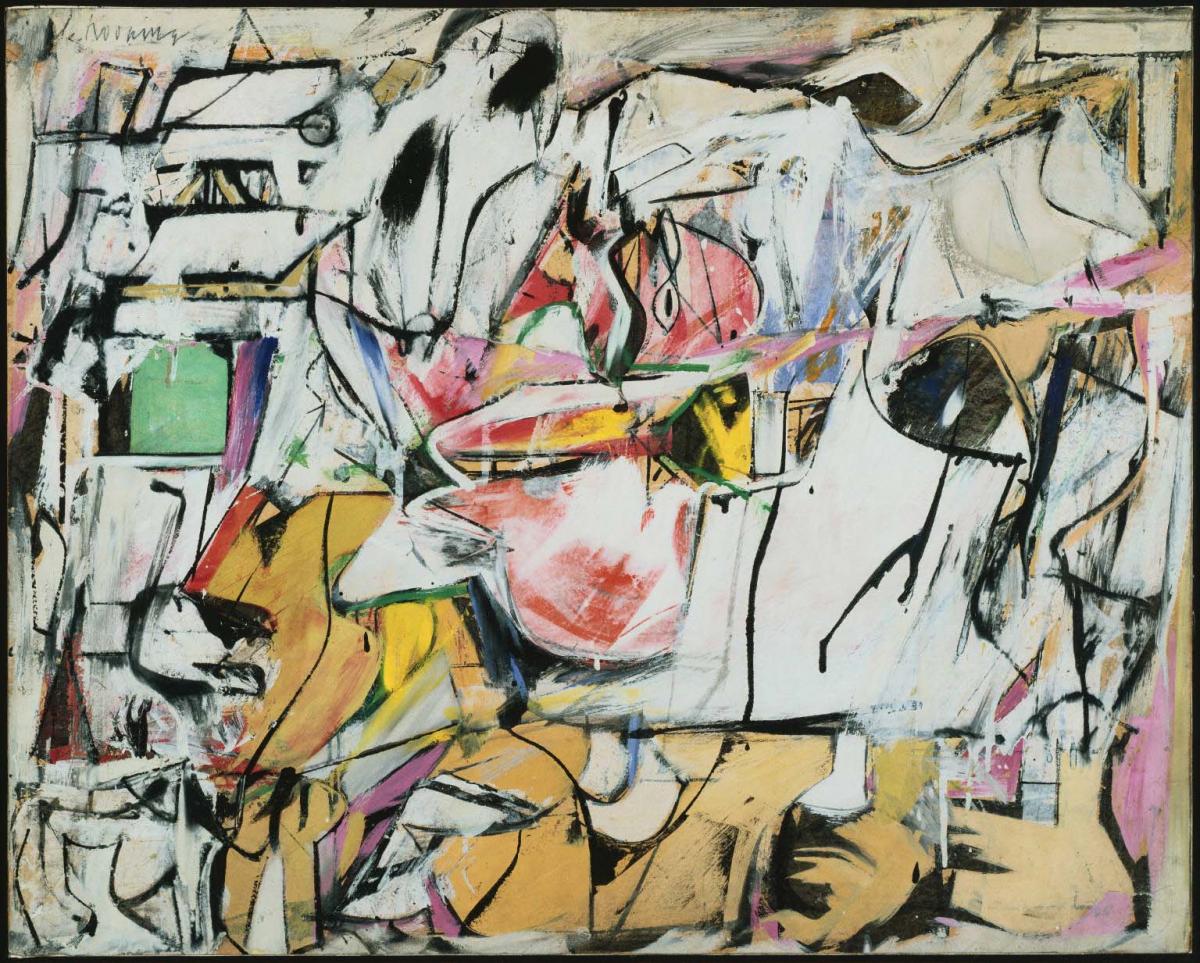Asheville
Willem de Kooning ( 1948 )

Willem de Kooning’s Asheville takes its name from the North Carolina town near Black Mountain College where de Kooning taught in the summer of 1948. A small but extremely complex work, it gathers together numerous, often oblique allusions, including references to the college and sections that recall de Kooning’s early training in crafts such as marbling, woodgraining, and lettering.
De Kooning’s works often blur the distinctions between drawings, studies, and paintings. Rather than the traditional academic progression from study to finished painting, de Kooning creates a constant flow and exchange of ideas and forms across different media. Four other versions of Asheville show shapes similar to those found in The Phillips Collection’s painting, suggesting that de Kooning consciously refined the seemingly random forms of the Phillips painting through his manipulations of form in the related works.
Asheville is an important example of de Kooning’s intricate experiments in “collage painting” of the late 1940s in which he used collage procedures, combining different materials such as torn paper and drawings to create illusions that might be used as a source for visual ideas. These techniques assisted the artist in working out a final composition that was free from any actual collaged elements. In the completed work, de Kooning created jumps and visual ruptures between passages that mimic collage. Additional deceptions in Asheville include the illusion of a tack holding a cut-out form at the upper left and a depiction of paper peeling from the surface to the left of what appears to be a mouth at the picture’s center.
De Kooning enhanced these effects by scraping down and building up the surface of the painting numerous times. This layering blends spontaneity and measured thought, giving Asheville a look of immediacy and chance, though de Kooning actually constructed the painting thoughtfully over a number of months. In addition, he interspersed sinuous black lines throughout the work with a liner’s brush, a tool with unusually long brush hairs traditionally used by sign painters. These gestures of black tracery resemble the spontaneous, unconscious marks of Surrealism’s psychic automatism, but upon closer inspection they reveal de Kooning’s technical mastery of the brush and reflect his fascination with precise line.
Content in Asheville is suggested through momentary glimpses of reality. The skyline noted near the upper-center edge of the painting suggests the Blue Ridge Mountains looming over the grounds of Black Mountain College. Beneath this passage is an area of blue that may refer to Lake Eden, which was adjacent to the school. Additional fragments include eyes, hands, and a mouth, as well as a window of green, an effective foil for the interplay between indoor and outdoor space in the picture.
Central to de Kooning’s art is the ambiguity and multiplicity of meanings through appropriations and transformations of reality. At the time de Kooning painted Asheville, the abstract expressionists struggled to come to terms with a multiplicity of ideas: the emotional legacy of World War II, the heritage of modernism, and the array of influences available to them in New York. De Kooning responded to this flux of ideas and experiences with an extraordinary degree of self-conscious control. His depictions of collage in Asheville are characteristic of a measured approach that allowed him to respect older traditions of figuration, illusion and craft, while simultaneously engaging more radical modern idioms.